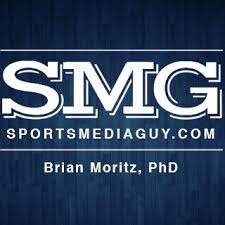
Last month, I wrote a story for Global Sport Matters about the impact that legalized sports gambling in the United States is having on sports media and sports journalism.
As always, I had way more material than would fit in the story. This is one of the great uses of blogs in journalism, one pioneered in my world by my friend Matt Vautour, who saw his blog as a journalistic version of the director’s commentary and deleted scenes portions of a DVD.
So in that spirit …
Did you ever wonder how the betting lines are actually set?
Teddy Greenstein, a senior editor at Points Bet, explained that process:
It’s a combination of human beings who are literally sitting around debating what they think the line is going to be. Let’s take, for example, (the Dec. 20) Bears-Vikings game. So the line opened with the Vikings favored by 3 1/2. So you’ve got human beings who were sitting around saying the Vikings, you know, they’re coming off this brutal loss. The Bears have lost a shit-ton of games in a row, but Justin Fields is a little better. The Bears are home, how much is home field worth? What’s the weather going to be like? Who’s injured, who’s playing?
And then the line gets adjusted during the week. Like, Matt Nagy announced that a bunch of coordinators had COVID Maybe that tilts it a little more towards the Vikings. Dalvin Cook is more healthy than ever.
So it’s a constant adjustment based on really two things. Where the “handle,” the weight of money, is going. And where are — we all them traders, they’re odds makers, but at Points Bet, and I think in the industry they’re called traders—where they think the sharps, the smartest bettors out there. The guys who are going to bet you know $10,000 on game day where they think they’re going to go
This is what’s also fascinating about sports betting. For the Super Bowl last year, the line on the Chiefs Bucs game was 3, 3 1/2. The Chiefs were favored, I’m almost sure ours ended up being 3 1/2. But we were taking like 85% of the money was on the Chiefs. So I would have always thought, oh that mean if 85% of the money is on the Chiefs, then you adjust the line, then you make the Chiefs minus 4 or 4 1/2 so you can get some money back
But what I’ve learned is our traders are not really seeking 50/50. We are seeking to have a point spread that is the most profitable for Points Bet, as is every other book.
So obviously our traders felt like no, no, no, no no. Tampa Bay has some good value here, and we don’t want to be the one book to have the Chiefs giving 4, because then all these people are going to rush to us with Tampa Bay plus 4 and (the) Tampa Bay money line and then we could have a big liability.
So it’s a combination of what’s happening in the industry, what’s happening in terms of injuries and weather, and those kind of factors. And then what they anticipate is going to happen with our biggest bettors.
Finally, Dr. Michael Mirer described the fundamental difference between breaking news for a traditional news organization and for a sports book.
“If you’re working for a sports book, your job is to break news on the Schefter model or the Woj Bomb model. Fundamentally, in that regard, you are doing one aspect of traditional journalism but you’re only really serving one specific audience segment. So breaking the news that that Giannis Antetokounmpo is in the COVID protocols, if you’re the Milwaukee Journal Sentinel beat writer, yeah you know that stuff is going to help gamblers, but its also this is a city that cares about that team and therefore that news is useful, right? So the ethical choice within that moment is of course, you break that story even if you know the gambling part of it is part of the decision to break that story.
“If you’re writing for a sports book, your understanding of your audience is this is entirely cause the lines are gonna move. By breaking this news, I’m gonna move the lines. So I’m producing that news for an audience whose entirely looking for actionable information.”



